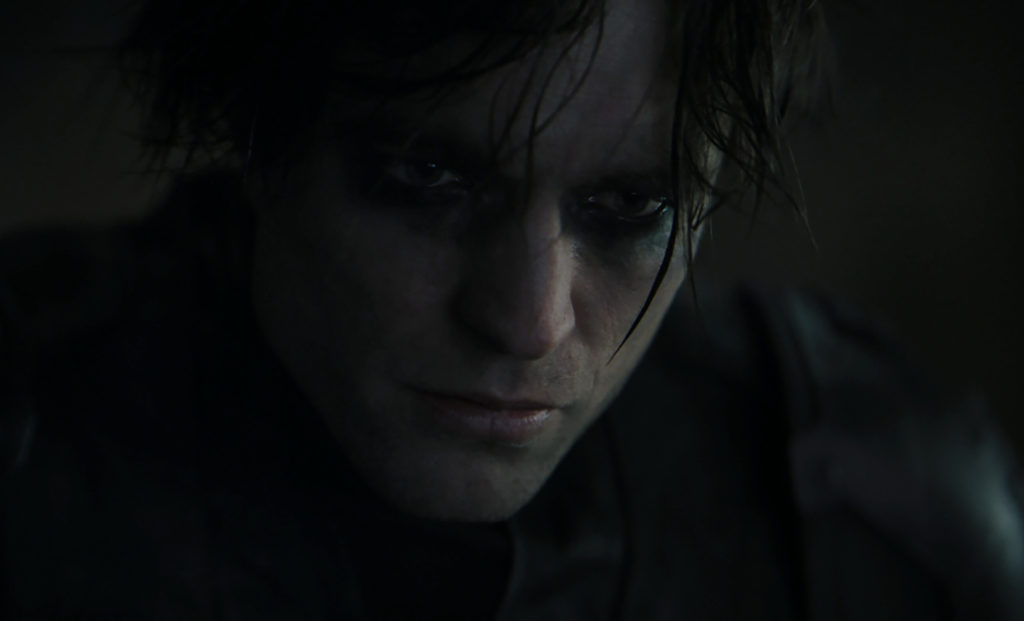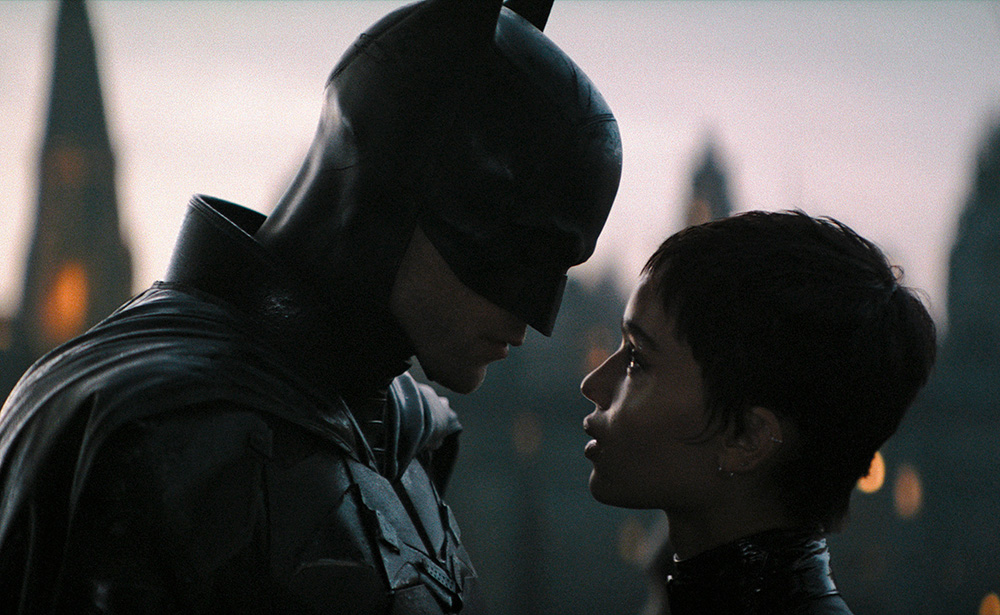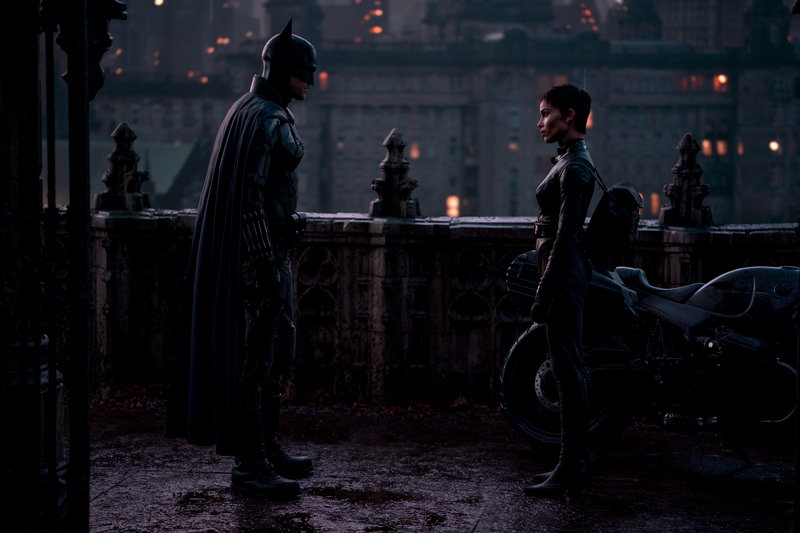
Matt Reeves is no stranger to directing blockbuster cinema. He brought the Cloverfield monster to life in 2008, and more recently, gave us the spectacular Dawn of the Planet of the Apes, and its follow-up War for the Planet of the Apes. He’s now the man behind one of the biggest, most anticipated films of 2022. Reeves’ The Batman, which stars Robert Pattinson as the Caped Crusader, is possibly the most ambitious and darkest cinematic iteration of the character yet.
In preparation for the film’s Australian release on March 3, the director spoke with local press about how he landed the job, and how he came to develop his own vision for the story.
“It has sort of been a dream experience,” Reeves says. “You know, when I first came in, they had a different version. Obviously, Ben [Affleck] was going to be Batman. It was in the DC Extended Universe, and the script they presented me was one that I didn’t necessarily see myself directing. I came in saying, ‘Look, I’m really flattered that you want to meet with me. I love Batman and this is a really cool version, but it’s not one I feel I would be the right director for.’”
But that didn’t stop Warner Bros. from pursuing Reeves further. Even though he was busy working on Planet of the Apes, the studio was happy to wait.
“They said, ‘We’d be interested to know what you want to do,” and I said, ‘Something that doesn’t connect to the Extended Universe and really focuses on the Batverse.’ A lot of times when you have a character who’s already established as Ben’s was, you have the Rogue’s Gallery characters come in, and the movies tell the story in a large part about those characters. I wanted to make sure that Batman would be at the centre of this story, and would break him to his core, force him to evolve, so that Batman was not becoming Batman, but already is Batman, and that he would have the arc.”

ROBERT PATTINSON as Batman in Warner Bros. Pictures’ action adventure “THE BATMAN”. ™ & © DC Comics
The Batman franchise has always fostered less obvious choices when it comes to casting. Critics were harsh when Tim Burton cast Michael Keaton, and even harsher when Christopher Nolan found his Joker in Heath Ledger. History proved those critics wrong, and it looks as though Reeves’ choice for his title character in The Batman is proving just as controversial.
However, the director assures that, “Weirdly, Rob [Pattinson] was an obvious choice for me. When I was writing, and once we were focusing on the idea of a ‘Year Two Batman’ – in the idea of there being a Batman who is around thirty, or, Rob’s age – I started looking at actors in that age range. I had been following his performances since Twilight. Somebody suggested that I check out Good Time by the Safdie Brothers and something clicked in that for me.
“He had such a kind of propulsive, obsessive desperation. He’s very intense, but also in his eyes you sensed this vulnerability and it was that mixed idea of somebody with a tremendous, almost dangerous drive, and then being able to see those moments of vulnerability and from that moment forward I was like, ‘I want it to be Rob.’ And then it turned out it was almost fated, because he was a huge Batman fan and when he found out I was doing the movie, he started tracking it on his own. When we met, we just really clicked.
“When I started looking at people for Selina (Catwoman), I really liked what I had seen of Zoë Kravitz’s work, but I met with a bunch of different actors. She and I really connected and I just felt like she had an understanding of the character’s spirit.

ROBERT PATTINSON as Batman and ZOË KRAVITZ as Selina Kyle in Warner Bros. Pictures’ action adventure “THE BATMAN,” Courtesy of Warner Bros. Pictures/ ™ & ©
“I mean, casting is everything, right? You’re trying to take all these iconic, beloved characters, but you’re trying to reinvent them and bring new specificity and life to them. If you’re going to make a Batman movie, the idea is that you are going to find a take on it that has something fresh to it, and something new to say. And you know what’s really interesting? Having written the movie with Rob in mind, I also wrote the movie with Paul Dano in mind, very weird.”
Paul Dano plays the mysterious Riddler, a psychopath who’s murdering Gotham City’s corrupt elite and leaving a trail of puzzles behind for Pattinson’s Batman to solve. When asked how the film’s riddles were developed, Reeves claims it wasn’t an easy process.
“That kind of thing is very time consuming and difficult,” he admits. “The funny thing is, you think, ‘Okay, this’ll be really great, he comes up with all of these riddles.’ But then you realise, ‘I’ve got to come up with these riddles!’ You try to reverse engineer, and you think ‘Oh, I could do this,’ and work it backwards. I bought books on riddles. I was collecting riddles, and there were certain ones that would resonate with me, and so I would put them aside on a card or write them down and gather all this stuff and then start looking for the connections.”
The Riddler’s puzzles aren’t just confined to the movie, as The Batman has an elaborate viral marketing campaign that allows fans to take part in the story themselves. Visitors to https://www.rataalada.com/ will be confronted with their very own riddles to solve. Reeves has a long history with immersive marketing campaigns dating back to Cloverfield, and got in on the action with The Batman, tweeting ciphers himself to help users solve the Riddler’s puzzles online.
The director spoke of his involvement in the campaign saying, “There’s something about this idea of trying to create a world you’re watching in a movie that extends beyond the movie, and that you feel like you can engage in all these different ways. In terms of rataalada.com, it actually figures into the movie, so it’s not just random. When I came up with that idea, the first thing I did was go out and grab the website domain. There is a team who’s been working hard to bring all that to life, and they’ve shared a lot with me and I’ve had my ideas. The Batman movies have a history of that. The Dark Knight had an amazing viral campaign too. I just love all that stuff.”

ROBERT PATTINSON and director MATT REEVES and on the set in Warner Bros. Pictures’ action adventure “THE BATMAN”. Photo Credit Jonathan Olley/™ & © DC Comics
Reeves had an incredible team help him bring the world of The Batman to the screen, both small, and most importantly, big. An integral part of the process was Australia’s own Greig Fraser, the accomplished cinematographer who last worked with Reeves on 2010’s Let Me In, starring Supa-Star alumnus Kodi Smit-McPhee.
“Greig and I, we have been trying to work together since Let Me In, and actually, he was the first person I went to when I got Dawn of the Planet of the Apes, and he was really excited but the schedule just didn’t work out. He’s such a wonderful artist and we have a lot of the same loves. I am a total tunnel vision person, but he loves to multitask. I mean, he’s very detail oriented but he loves to have multiple things going on at once. We compliment each other well.”
Fraser and Reeves worked hard to develop a grimy, grungy 1970s film aesthetic for The Batman that mirrors the mindsets and state of abandonment many of the characters find themselves in. Reeves spoke about how they achieved that look, and which movies influenced his film most, both visually and thematically.
“The French Connection was one, Taxi Driver’s another,” he explains with reverence. “A really big one is a movie Alan Pakula did, called Klute, starring Jane Fonda. That was an important movie, as it related to Batman and Selina’s relationship. Klute kind of judges who Bree – the Jane Fonda character – is, and then ends up being drawn to her anyway.
“He’s sort of naive in the way that Batman is. Batman doesn’t understand the ways in which he’s lived a sheltered life, and that she’s had to be a survivor, And so he doesn’t understand the challenge of what it is for her to exist in this city. Klute had a lot of that texture in it.”
Reeves went on to talk more in detail about technical aspects of The Batman’s gritty, rain-soaked visual style.
“What’s difficult is that cameras – especially now that everything has moved to digital – everything has gotten so clean and you start getting an aesthetic where the grit is lost. Part of what’s amazing about some of those movies from that era is that the anamorphic lenses were absolutely beautiful, but they were really imperfect. As a result, the focus fell off, the bokeh (blur produced in out-of-focus parts of an image), and those strange peculiarities of those lenses are really what gave those seventies movies a unique look. So we used lenses that were really messed up.
“These lenses were not technically great and we also weren’t afraid to get water on the lens during a heavy raining scene for texture, and we would do whatever we could to make everything seem gritty and practical. There were a lot of textural elements that drove the way we shot, and then, even the way that we ultimately finished the film. There’s no moment where the camera does something in the CG world that it couldn’t do in the real world, so we tried to make everything bound by the rules, as if we were making this movie in that era with a completely practical base.”

ROBERT PATTINSON as Batman and ZOË KRAVITZ as Selina Kyle in Warner Bros. Pictures’ action adventure “THE BATMAN”. Photo Credit Jonathan Olley/™ & © DC Comics
If Reeves’ direction proves to be successful, it’s no secret that the studio will want to see The Batman move ahead with its own trilogy. We asked if Reeves managed to shoot footage for any potential upcoming sequel.
“No. No we didn’t,” Reeves says very matter of factly. “We had a lot of ideas. I had a lot of thoughts on where this goes, and some of them we’re already doing. You know we’re doing a Penguin show. We’re developing a couple of shows. I’m really excited about the show that we’re doing with Colin [Farrell]. But at the end of the day, you can’t really begin this kind of thing as if you’re just doing chapter one, because you don’t really know. This movie has to be embraced by the fans. We have to see the movie. This has to be a movie that people should connect to, and I really hope and believe that they will connect to this iteration of Batman. But you just don’t know.
“We put everything in the service of trying to realise this movie as fully as we could, so that it would imply all of the places you could go, but that it was a story that would stand alone. It may very well be, and I hope it is chapter one. But the important thing was that it couldn’t function as if it was only chapter one. It had to feel like it was a complete experience in and of itself, and that if this is the only one that we make, that this movie stands on its own. So we didn’t shoot any future stuff. Its own characters should flesh out the world.
“There’s no intent, even storywise, to carry forth something that was deliberately in this movie. It’s more like you just see all this detail and it could lead in all these directions, and where it’s going to lead. I have a lot of ideas, but there was no set direction in that.”
The Batman is only in cinemas from Thursday, 3 March









